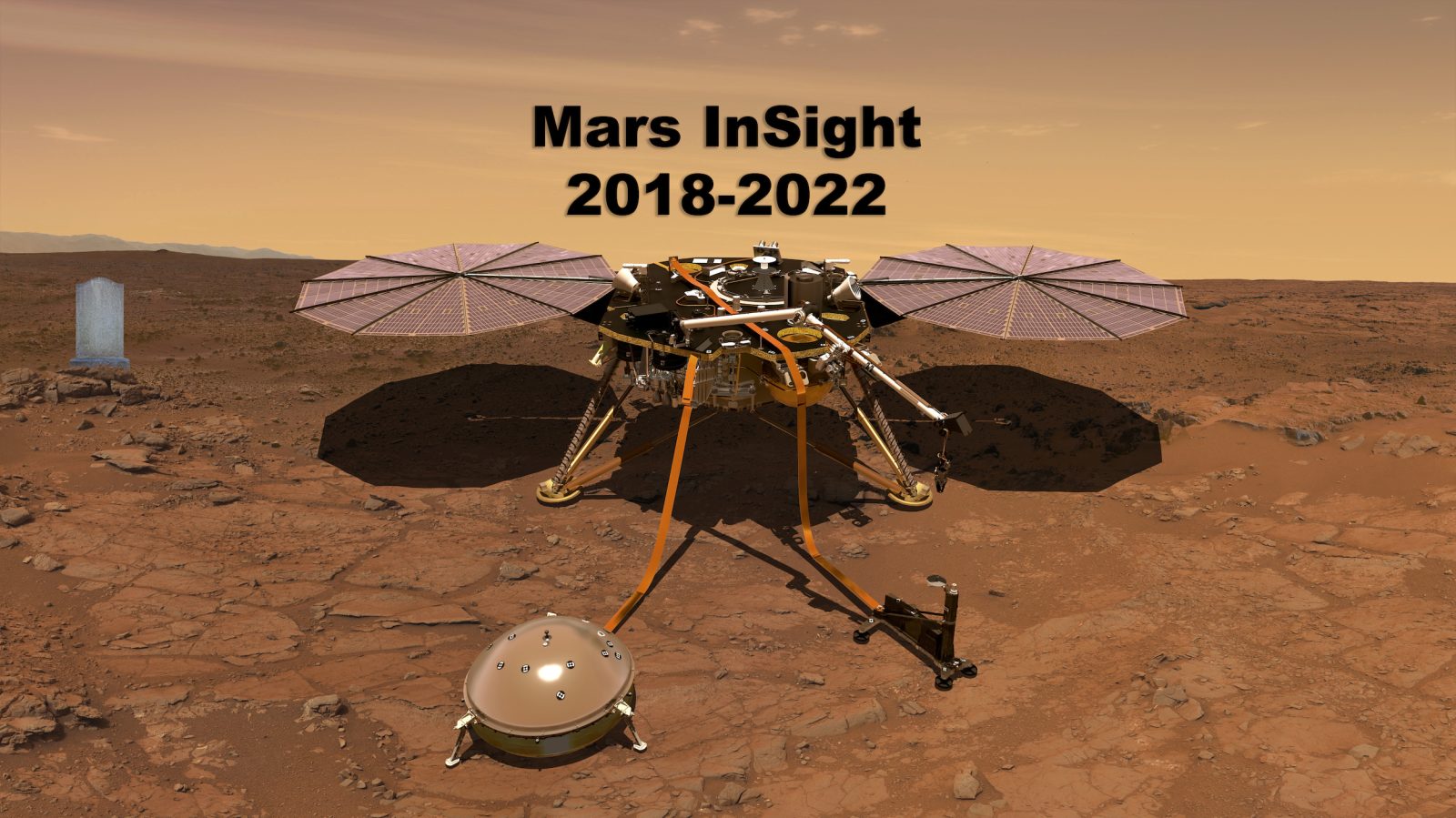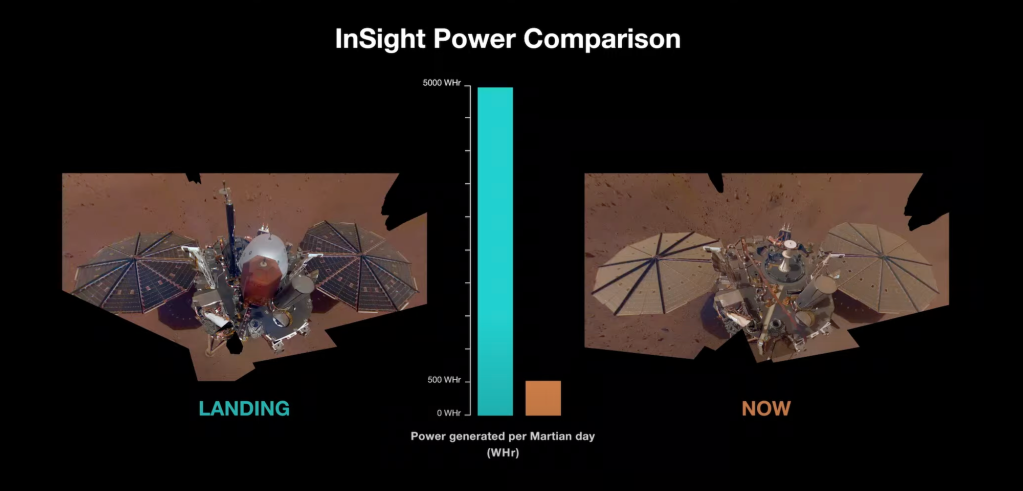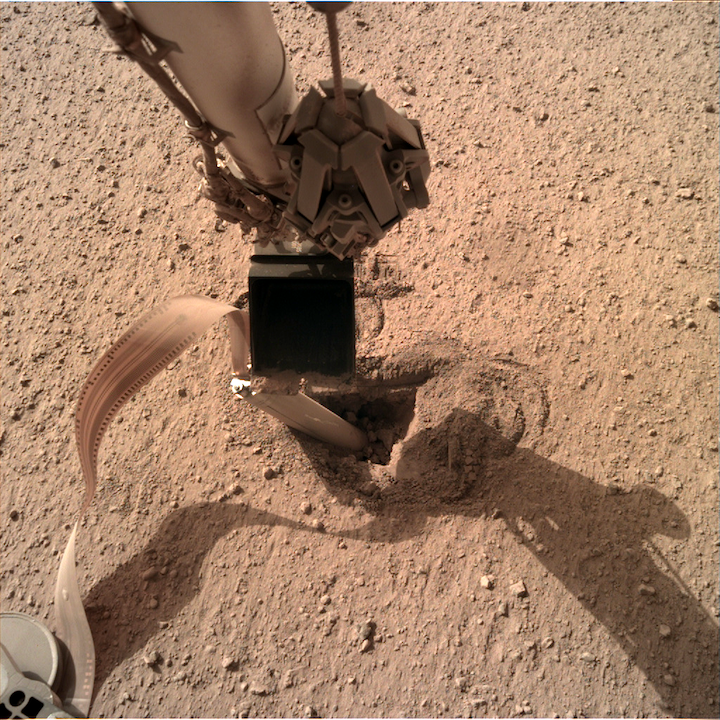
NASA announced on May 17 that it expects the InSight lander mission to end this year. While it hasn’t gotten as much attention as the Perseverance rover, InSight has made some remarkable discoveries during its lifetime.
InSight lander is running out of power
NASA’s InSight lander is a solar-powered lander, and it borrowed the panel’s design from the successful Phoenix lander. These large circular solar panels have been collecting Martian dust ever since InSight landed. Like most solar-powered missions on Mars, dust has been the number one concern for mission termination.
At the start of InSight’s mission, those two solar panels produced 10,000 watt-hours per sol (Martian day), which was plenty to power all of the lander’s science instruments. Those instruments include a seismometer, weather station, robotic arm, and what NASA called a mole. Unfortunately, now the InSight lander only produces 1,000 watt-hours per sol – and that number continues to drop.
This drop in power means mission managers have to begin turning off scientific instruments to maximize InSight’s lifespan. InSight’s seismometer will be prioritized, with managers hoping to keep it operating until the end of summer. At that point, InSight will only have enough power to take the occasional photo and communicate back with Earth. Eventually, InSight will go quiet, ending the lander’s mission entirely.

Does InSight have any chance of survival?
Yes, InSight has a chance to live on, but NASA will have no control over how. There is a chance the same dust-filled atmosphere that has restricted InSight’s power levels can also save it. As happened with NASA’s Opportunity and Spirit rovers, dust devils have been known to blow dust off solar panels. This “cleaning event” can give life to otherwise doomed missions. This is all InSight team members can hope for.
We’ve been hoping for a dust cleaning like we saw happen several times to the Spirit and Opportunity rovers. That’s still possible, but energy is low enough that our focus is making the most of the science we can still collect.
Bruce Banerdt, InSight’s principal investigator at NASA’s Jet Propulsion Laboratory
The managers of the InSight lander have been able to externally clean off parts of its solar panels with a pretty ingenious trick. The team programs InSight to take a scoop of Martian soil and dump it just off the edge of one of InSight’s solar panels. The wind blows the dust across the panel, taking more dust with it. This seems anti-productive, but it has actually worked and given InSight more time to collect more science. However, this method will not be enough this time to save InSight.
InSight’s troublesome but successful history
Launched back in 2018 on an Atlas V rocket from Vandenberg Space Force Base (then Air Force Base), InSight was the first American interplanetary mission to launch from California. Its mission was to help scientists better understand below Mars’ surface. Its seismometer was the most powerful one ever sent to Mars and, along with the onboard weather station, allowed scientists to exclude wind gusts from the data, something previous missions could not.
InSight discovered its first “Marsquake” in April of 2019. Since then, InSight has monitored more than 1,300. These quakes have helped scientists learn the density of Mars’ core, mantel, and crust, all three of which were found to differ vastly from what was initially believed.
Discoveries made with the failed Heat Flow ‘mole’ experiment
One of the more exciting new experiments sent to Mars on the InSight lander was the Heat Flow probe or the mole. The Heat Flow package was one of the first items removed from the lander and placed on the Martian surface after landing. It began digging but ran into problems finding the grip to dig down into Mars’ soil shortly after.

The soil around InSight seemed to differ from what scientists expected to find through observation elsewhere on the planet. Several different attempts were made to help the mole continue digging, but several months later, the experiment was given up. While deemed a failure, NASA learned more about the soil composition on Mars, and I’m sure a similar experiment will return on another mission in the future for a second try.
InSight has changed how NASA predicts weather on Mars
The InSight lander’s weather station made detailed recordings of Mars’ weather. This data has helped researchers back on Earth better understand weather events on Mars. Another reason why we know InSight’s mission will most likely end in 2022.
The area InSight is station will go into a period of more dust in the air, reducing the available sunlight. Mars is also moving away from the Sun, which will also add strain to InSight’s power system. Hopefully, InSight will live on with a lucky cleaning event, but it has lived a good life with a plethora of historical firsts to its name.
FTC: We use income earning auto affiliate links. More.



Comments